#Biofungicide
Explore tagged Tumblr posts
Link
1 note
·
View note
Text
Trichoderma Harzianum: A Potent Bio for Optimal Health
Trichoderma harzianum, a potent biofungicide, stands out for its versatile disease-control capabilities in agriculture. It combats a broad spectrum of plant diseases by operating through mycoparasitism, antibiosis, and nutrient competition. This fungus establishes a protective presence around plant roots, inhibiting soil-borne pathogens and stimulating plant growth. With environmentally safe qualities and compatibility with various inputs, Trichoderma harzianum offers a sustainable and effective solution for disease management. Explore Peptech’s cutting-edge biofungicide solutions at Peptech’s Website for healthier and more resilient crop cultivation!
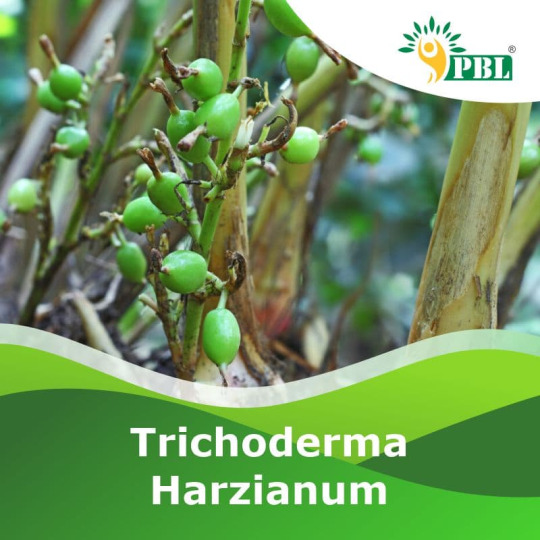
0 notes
Text
Peptech Bio presents Trichoderma Harzianum - a solution for healthy and vibrant crops.
Peptech Bio is proud to introduce Trichoderma harzianum, a natural and effective solution for controlling plant diseases and promoting healthy crops. Derived from the beneficial Trichoderma harzianum fungus, this bio fungicide offers sustainable protection against many pathogenic fungi. It works by colonizing the plant's root system, creating a protective barrier, and promoting a healthier soil environment. Trichoderma harzianum enhances plant growth, suppresses soil-borne pathogens, and contributes to overall crop resilience. As a fungicide, it aligns with environmentally friendly and organic farming practices, providing an alternative to chemical pesticides. Its versatility and compatibility make it a valuable tool for integrated pest management strategies in agriculture.

#Trichoderma Harzianum#Biofungicide#Plant Disease Control#Organic Farming#Sustainable Agriculture#Soil Health#Crop Resilience
0 notes
Text
Biofungicide based on essential oils developed to combat soybean disease

- By Rodrigo de Oliveira Andrade , Agência FAPESP -
Researchers at Linax, a company based in Votuporanga, São Paulo state, Brazil, have developed a fungicide made of essential oils, with low environmental impact and high economic potential, for use against soybean disease.
The solution was developed via a project supported by the FAPESP Innovative Research in Small Business Program (PIPE). It consists of a blend of oils extracted from different plants and encapsulated by natural polymers which release the substance slowly and gradually, extending its period of action and reducing the risk of fungal resistance development.
Prototypes of the technology were tested against Phakopsora pachyrhizi, the fungus that causes Asian soybean rust, one of the worst diseases affecting this crop in Brazil. It attacks the leaves, undermining their ability to perform photosynthesis and form healthy grains. If it is not properly controlled, it can ruin up to 90% of a plantation and cause massive financial losses.
The solution developed by Linax is as effective as the fungicides most used to combat the disease in Brazil. “Application of a half-dose of our solution in conjunction with a half-dose of conventional fungicide is more effective than application of conventional fungicide alone,” says Nilson Borlina Maia, an agricultural engineer and a partner in Linax. “So adding a dose of our solution based on essential oils reduces the volume of conventional fungicides in use, which is positive because they’re harmful to human and animal health and to the environment.”
The technology is the result of a partnership between Linax and Santa Clara Group, an agricultural input supplier in Ribeirão Preto, São Paulo state. The group recently announced it was acquiring Linax, which would become part of Santa Clara Agrociência, its biopesticide division.
Linax’s fungicide will be launched this year. According to Maia, the same strategy will be used against fungi that cause disease in other crops, and environmentally sustainable solutions are under development to boost the effectiveness of biological pesticides. “We’re conducting a project with UNESP [São Paulo State University] to encapsulate fungi and bacteria that can be used against crop pests and diseases, thus protecting them against ultraviolet radiation and enhancing their viability and effectiveness,” he said.
Innovation track record
Linax has a track record of innovations involving essential oils and natural polymers, many of which were developed with the support of PIPE and the Business Research Support Program (PAPPE) run by FAPESP in partnership with the Brazilian Innovation Agency (FINEP), an arm of the Ministry of Science, Technology and Innovation (MCTI).
Linax itself was born from a project supported by PIPE, starting in 2004, to extract linalool oil from basil (Ocimum basilicum). Linalool is widely used by the perfume industry and is a key ingredient of Chanel No. 5. It has long been extracted from Aniba rosaeodora, a severely endangered tree native to the Amazon, leading to its near-extinction. According to a 2002 estimate, 2 million of these trees had been felled for linalool harvesting up until then. The species is now found only in a few parts of Amazonas state, including the municipalities of Parintins, Maués, Presidente Figueiredo and Novo Aripuanã.
The research that gave rise to the project and the firm began years earlier, in 1998, when Maia set out to screen 18 plants for linalool, including coriander, bay laurel (Laurus nobilis), cinnamon and orange, as well as basil. “I was looking for an alternative to the destruction of A. rosaeodora,” he said.
He soon ruled out bay laurel. “The tree contains a lot of linalool but takes a long time to reach adulthood, making its cultivation for commercial extraction unviable. Coriander and cinnamon don’t contain linalool. Orange trees contain very little,” he recalled.
Although he failed to find a plant with as much linalool as A. rosaeodora, where it can reach 90% of the plant’s essential oil, Maia found basil to be an economically viable source of natural oil that can substitute for linalool in many cosmetics, perfumes and other hygiene and beauty products.
The project was supported at the time by the Campinas Institute of Agronomy (IAC, an arm of the São Paulo State Department of Agriculture and Supply). Large numbers of basil seedlings were produced and commercial plantations were quickly established. To facilitate extraction of essential oil in the laboratory. Maia developed a stainless steel mini-distiller that does not release toxic residues and produces high-quality output. “In conventional glass distillers, which are hard to handle, loading and unloading the plant material takes about an hour on average. With the mini-distiller we created, it takes about a minute and the distilling is controlled by an automated electrical system,” he said.
Linax presented the mini-distiller at the 3rd Brazilian Symposium on Essential Oils in Campinas in November 2005, which opened up new business opportunities for the firm. “We began to produce and market essential oil distillers for scientific laboratories, perfumeries and small, medium and large farmers. We’ve sold more than 200 units since then,” Maia said.
In 2020, Linax was awarded funding by FAPESP and FINEP via the PIPE-PAPPE Grant Program to develop an automated control system for its distillers based on artificial intelligence software. “The system controls and monitors the entire essential oil distilling process, while also enhancing its efficiency,” he said.
Linax has now fully mastered all stages of linalool production. It helps clients produce seedlings and grow the varieties they need. It can also assist harvesting and distilling of essential oil with 95% purity, assuring environmental, economic and social sustainability. “Linax also helps clients produce other essential oils, which can be used to develop new products that don’t yet exist on the market,” Maia said.
The strategy offers family farmers in the Votuporanga area an opportunity for extra income and helps strengthen the production of essential oils as a new agribusiness segment.
This text was originally published by FAPESP Agency according to Creative Commons license CC-BY-NC-ND. Read the original here.
--
Read Also
Pesticide seed coatings are common yet underreported
#Biofungicide#brazil#environment#sustainability#soybean#agriculture#plants#food#pesticide#farming#linax#ecology
0 notes
Text
Trichoderma harzianum is a filamentous fungus belonging to the genus Trichoderma, which encompasses a diverse group of fungi known for their beneficial interactions with plants and other organisms. Trichoderma harzianum is widely recognized for its role in biological control, plant growth promotion, and enhancement of soil health. One of the most significant attributes of Trichoderma harzianum is its ability to act as a potent biocontrol agent against plant pathogens. It competes with and antagonizes harmful fungi and bacteria by producing a range of enzymes, antimicrobial compounds, and volatile organic compounds. In agriculture and horticulture, Trichoderma harzianum is utilized as a biofungicide and biofertilizer.
#Trichoderma harzianum fungicide#Trichoderma harzianum 1% wp#Trichoderma harzianum#biofungicide#fungicide
0 notes
Text
Trichoderma Viride Biofungicides Market Size, Share, Key Growth Drivers, Trends, Challenges and Competitive Landscape
"Global Trichoderma Viride Biofungicides Market - Size, Share, Demand, Industry Trends and Opportunities
Global Trichoderma Viride Biofungicides Market, By Source (Microbial Species, Botanical), Formulation (Wettable Powder, Water Dispersible Granules, Suspension Concentrates, Soluble Powder, Powder for Dry Seed Treatment, and Others), Pest (Phytophthora, Botrytis, Alternaria, Botrytis and Venturia, Botrytis and Phytophthora, Pythium and Rhizoctonia, Others), Application (Foliar Spray, Soil treatment, Seed Treatment, Other), Crop Type (Fruits and Vegetables, Cereals and Grains, Oilseeds and Pulses and Other), Country (U.S., Canada, Mexico, Germany, Poland, Ireland, Italy, U.K., France, Spain, Netherland, Belgium, Switzerland, Turkey, Russia, Rest of Europe, Japan, China, India, South Korea, New Zealand, Vietnam, Australia, Singapore, Malaysia, Thailand, Indonesia, Philippines, Rest of Asia-Pacific, Brazil, Argentina, Chile, Rest of South America, UAE, Saudi Arabia, Egypt, Kuwait, South Africa, Rest of Middle East and Africa) Industry Trends.
Access Full 350 Pages PDF Report @
**Segments**
- **By Type**: Trichoderma Viride biofungicides can be categorized based on different types such as liquid and powder formulations. Liquid formulations are generally preferred for foliar application, while powder formulations are suitable for soil application.
- **By Application**: The market for Trichoderma Viride biofungicides can be segmented by application, which includes agriculture, horticulture, floriculture, and others. These biofungicides play a crucial role in controlling various plant diseases and promoting plant growth in different applications.
- **By Distribution Channel**: Distribution channels for Trichoderma Viride biofungicides include direct sales, online sales, retail stores, and agricultural cooperatives. The choice of distribution channel depends on factors like reach, product availability, and customer preferences.
**Market Players**
- **Biomax** - **Certis USA LLC** - **T. Stanes & Company Limited** - **Syngenta** - **BASF SE** - **Crop Protection Solutions** - **BioWorks, Inc.** - **Novozymes** - **Isagro** - **Hindustan Bio-Tech**
These market players are actively involved in the production, distribution, and promotion of Trichoderma Viride biofungicides globally. They focus on strategic collaborations, product developments, and expansions to strengthen their market presence and gain a competitive edge in the industry.
For a detailed market analysis of the Trichoderma Viride biofungicides market, including insights on market trends, key players, growth factors, challenges, and opportunities, refer to https://www.databridgemarketresearch.com/reports/global-trichoderma-viride-biofungicides-marketTrichoderma Viride biofungicides have gained significant traction in the agricultural sector due to their effectiveness in controlling plant diseases and promoting plant growth. The market segments for these biofungicides provide insights into the diverse applications and distribution channels that drive their consumption and availability. By type, the categorization into liquid and powder formulations caters to the specific requirements of foliar and soil applications, showcasing the versatility of Trichoderma Viride products. This segmentation allows for targeted usage based on application needs, enhancing their impact on crop health and productivity across different sectors like agriculture, horticulture, and floriculture. The distribution channels play a vital role in ensuring the accessibility of these biofungicides to farmers and agricultural stakeholders, with options like direct sales, online platforms, retail stores, and agricultural cooperatives offering various avenues for procurement.
Market players such as Biomax, Certis USA LLC, Syngenta, BASF SE, and others are key drivers of the Trichoderma Viride biofungicides market, with their emphasis on innovation, strategic partnerships, and expansion strategies. These companies focus on developing advanced formulations, investing in research and development, and expanding their global footprint to capitalize on the growing demand for sustainable agricultural solutions. Collaborations with research institutions, universities, and government bodies further strengthen their position in the market by facilitating knowledge exchange and technology transfer. The competitive landscape is characterized by intense competition, necessitating continuous product improvements and marketing initiatives to differentiate offerings and capture market share effectively.
Market trends in the Trichoderma Viride biofungicides sector point towards a rising preference for organic farming practices, sustainable crop protection solutions, and environmentally friendly alternatives to chemical pesticides. Consumer awareness regarding food safety and environmental impact drives the adoption of bio-based products like Trichoderma Viride biofungicides, creating opportunities for market players to capitalize on shifting preferences and regulatory trends. Challenges such as formulation stability, shelf life, and consistency in efficacy require ongoing research and development efforts to address consumer concerns**Segments**
- Global Trichoderma Viride Biofungicides Market, By Source (Microbial Species, Botanical) - Formulation (Wettable Powder, Water Dispersible Granules, Suspension Concentrates, Soluble Powder, Powder for Dry Seed Treatment, and Others) - Pest (Phytophthora, Botrytis, Alternaria, Botrytis and Venturia, Botrytis and Phytophthora, Pythium and Rhizoctonia, Others) - Application (Foliar Spray, Soil treatment, Seed Treatment, Other) - Crop Type (Fruits and Vegetables, Cereals and Grains, Oilseeds and Pulses, Other) - Country (U.S., Canada, Mexico, Germany, Poland, Ireland, Italy, U.K., France, Spain, Netherlands, Belgium, Switzerland, Turkey, Russia, Rest of Europe, Japan, China, India, South Korea, New Zealand, Vietnam, Australia, Singapore, Malaysia, Thailand, Indonesia, Philippines, Rest of Asia-Pacific, Brazil, Argentina, Chile, Rest of South America, UAE, Saudi Arabia, Egypt, Kuwait, South Africa, Rest of Middle East, and Africa)
- Trichoderma Viride biofungicides have captured a significant market share in the agricultural sector due to their efficacy in disease control and promoting plant growth. The segmentation of the market into different sources, formulations, pests, applications, crop types, and countries
A high quality Trichoderma Viride Biofungicides market research report is a definitive solution for the success of business at local, regional as well as international level. All the market factors are described in the report as required to define the topic and provide maximum information for better decision making. Several other factors such as import, export, gross margin, price, cost, and consumption are also analyzed under the section of production, supply, sales and market status. An excellent Trichoderma Viride Biofungicides market report comprises of comprehensive and thorough insights which are based on business intelligence.
TABLE OF CONTENTS
Part 01: Executive Summary
Part 02: Scope of the Report
Part 03: Research Methodology
Part 04: Market Landscape
Part 05: Pipeline Analysis
Part 06: Market Sizing
Part 07: Five Forces Analysis
Part 08: Market Segmentation
Part 09: Customer Landscape
Part 10: Regional Landscape
Part 11: Decision Framework
Part 12: Drivers and Challenges
Part 13: Market Trends
Part 14: Vendor Landscape
Part 15: Vendor Analysis
Part 16: Appendix
Countries Studied:
North America (Argentina, Brazil, Canada, Chile, Colombia, Mexico, Peru, United States, Rest of Americas)
Europe (Austria, Belgium, Denmark, Finland, France, Germany, Italy, Netherlands, Norway, Poland, Russia, Spain, Sweden, Switzerland, United Kingdom, Rest of Europe)
Middle-East and Africa (Egypt, Israel, Qatar, Saudi Arabia, South Africa, United Arab Emirates, Rest of MEA)
Asia-Pacific (Australia, Bangladesh, China, India, Indonesia, Japan, Malaysia, Philippines, Singapore, South Korea, Sri Lanka, Thailand, Taiwan, Rest of Asia-Pacific)
Core Objective of Trichoderma Viride Biofungicides Market:
Every firm in the Trichoderma Viride Biofungicides Market has objectives but this market research report focus on the crucial objectives, so you can analysis about competition, future market, new products, and informative data that can raise your sales volume exponentially.
Size of the Trichoderma Viride Biofungicides Market and growth rate factors.
Important changes in the future Trichoderma Viride Biofungicides Market.
Top worldwide competitors of the Market.
Scope and product outlook of Trichoderma Viride Biofungicides Market.
Developing regions with potential growth in the future.
Tough Challenges and risk faced in Market.
Global Trichoderma Viride Biofungicides top manufacturers profile and sales statistics.
Browse Trending Reports:
Flooring and Carpets Market Agile IoT Market Bouillon Market Progressive Familial Intrahepatic Cholestasis Type 2 Treatment Market (GPS) Positioning Systems Market Security Fencing Market Post-Bariatric Hypoglycemia (PBH) Treatment Market Mist Eliminators Market Surface Roughness Measurement (SRM) Market Recreational Boats Market Heavy Duty Corrugated Packaging Market Dairy Desserts Market
About Data Bridge Market Research:
Data Bridge set forth itself as an unconventional and neoteric Market research and consulting firm with unparalleled level of resilience and integrated approaches. We are determined to unearth the best market opportunities and foster efficient information for your business to thrive in the market. Data Bridge endeavors to provide appropriate solutions to the complex business challenges and initiates an effortless decision-making process.
Contact Us:
Data Bridge Market Research
US: +1 614 591 3140
UK: +44 845 154 9652
APAC : +653 1251 975
Email: [email protected]"
0 notes
Text
Bio Fungicides Market Drivers: Understanding the Key Factors Accelerating the Growth of the Industry
The global bio fungicides market has been experiencing significant growth due to the increasing demand for sustainable agricultural practices. Bio fungicides are natural or biological substances used to control or manage fungal diseases in crops. As the agricultural sector moves towards more eco-friendly and sustainable solutions, the demand for bio-based crop protection products is on the rise. This article explores the major drivers propelling the growth of the bio fungicides market.
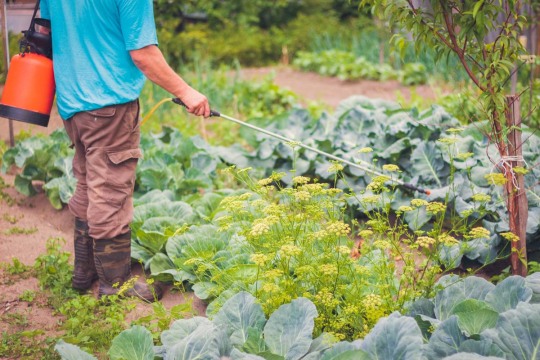
Increasing Consumer Demand for Organic Produce
One of the key drivers of the bio fungicides market is the growing consumer preference for organic produce. With rising awareness about the harmful effects of synthetic pesticides and fertilizers, consumers are increasingly seeking organic fruits, vegetables, and crops grown without the use of chemical-based fungicides. Bio fungicides, made from natural organisms or materials, are seen as a safe alternative, appealing to consumers who prioritize sustainability, environmental preservation, and health.
As the global trend toward organic farming continues, farmers are being encouraged to adopt bio fungicides to protect crops from fungal infections. This shift in consumer behavior is directly influencing agricultural practices, pushing the demand for bio fungicides higher.
Government Regulations and Environmental Concerns
Governments across the world are tightening regulations surrounding the use of chemical pesticides in agriculture. Environmental concerns related to the toxic effects of synthetic fungicides on soil, water, and ecosystems are prompting the development and adoption of bio-based alternatives. Bio fungicides are considered less harmful to the environment, offering a more sustainable approach to crop protection.
In many countries, regulations are being put in place that limit the use of chemical pesticides, especially in organic farming. These regulations are driving farmers and agricultural businesses to explore more eco-friendly solutions, further contributing to the growth of the bio fungicides market.
Rising Awareness of Sustainable Agricultural Practices
The increasing focus on sustainability within the agricultural industry is another key factor driving the bio fungicides market. Consumers, retailers, and governments are putting more emphasis on reducing the carbon footprint of farming practices. As sustainability becomes a major priority, the demand for bio-based solutions, such as bio fungicides, has grown significantly.
Farmers are now looking for ways to optimize crop yield while minimizing environmental impact. Bio fungicides offer an effective solution that not only controls fungal diseases but also aligns with sustainability goals. The shift towards integrated pest management (IPM) strategies, which combine chemical and biological methods, is boosting the adoption of bio fungicides.
Advancements in Biotechnology and Research
Research and development (R&D) in biotechnology have led to the creation of more effective and targeted bio fungicides. Advances in microbial biotechnology, such as the development of beneficial microorganisms, have significantly enhanced the efficacy of bio fungicides in controlling a wide range of fungal diseases. Furthermore, research is continually uncovering new ways to improve the stability and shelf life of bio fungicides, making them more viable for large-scale commercial use.
These advancements have not only improved the performance of bio fungicides but have also reduced their cost, making them more accessible to farmers worldwide. As R&D efforts continue to evolve, it is expected that the bio fungicides market will see even greater innovation, driving further adoption.
Growing Demand from Emerging Economies
Emerging economies, particularly in Asia-Pacific, Latin America, and Africa, are increasingly adopting bio fungicides as part of their agricultural practices. Rapid industrialization, coupled with a growing middle class, is leading to higher demand for food production. In these regions, traditional farming methods are being modernized, and there is an increasing focus on sustainability and organic farming.
Governments and organizations are supporting the transition to more sustainable agricultural methods in these regions, providing financial incentives, training, and resources. As the awareness and adoption of bio fungicides grow in emerging markets, the market for these products continues to expand, contributing to the overall growth of the global bio fungicides market.
Conclusion
The bio fungicides market is experiencing significant growth due to a combination of factors, including consumer demand for organic produce, government regulations, environmental concerns, advancements in biotechnology, and increasing adoption in emerging economies. As sustainability becomes an integral part of modern agriculture, bio fungicides offer an eco-friendly, effective, and cost-efficient solution to managing fungal diseases in crops.
0 notes
Text
Biofungicides Market Trends: An In-Depth Exploration of Growth Drivers, Emerging Innovations, and Key Challenges in Sustainable Agriculture
The biofungicides market has been witnessing remarkable growth, driven by increasing awareness of sustainable agricultural practices, regulatory pressures, and advancements in biotechnology. Biofungicides, derived from natural sources like beneficial microbes and plant extracts, are pivotal in combating fungal diseases while preserving soil health and biodiversity. This article provides a comprehensive analysis of the key trends, growth drivers, emerging innovations, and challenges shaping the biofungicides market in the context of sustainable agriculture.
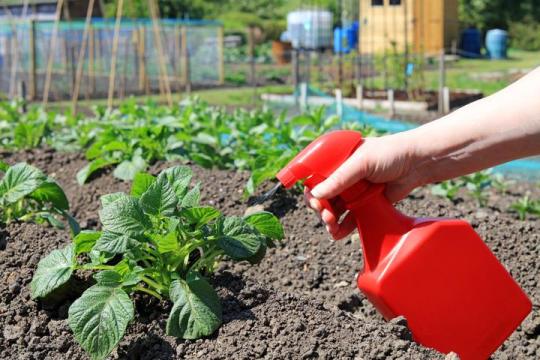
Growth Drivers in the Biofungicides Market
Rising Demand for Sustainable Farming Solutions As consumers prioritize eco-friendly and organic food products, farmers are transitioning toward sustainable farming methods. Biofungicides align with these practices by offering effective disease management without the adverse effects associated with chemical fungicides.
Government Regulations and Policies Governments worldwide are implementing stringent regulations to reduce chemical pesticide use. Policies like the European Union’s Farm to Fork Strategy and the United States’ Biopesticide Demonstration Program are fostering the adoption of bio-based alternatives, driving market growth.
Climate Change and Agricultural Challenges Climate change is intensifying the prevalence of fungal diseases, necessitating effective and eco-friendly solutions. Biofungicides address these challenges while enhancing crop resilience, making them a vital tool for farmers in unpredictable climates.
Expansion of Organic Farming The global organic food market is growing rapidly, with consumers demanding chemical-free produce. Biofungicides play a critical role in organic farming by ensuring crop protection without compromising organic certification standards.
Focus on Soil Health Modern agricultural practices increasingly emphasize soil health as a foundation for sustainable farming. Biofungicides not only control fungal diseases but also promote beneficial microbial activity, enhancing soil fertility and biodiversity.
Emerging Innovations in Biofungicides
Advancements in Microbial Research Biotechnology is enabling the discovery of new microbial strains with enhanced efficacy against fungal pathogens. Multi-strain biofungicides offer broader-spectrum disease control and improved crop protection.
Innovative Formulation Technologies Innovations in encapsulation and delivery mechanisms are improving the stability and effectiveness of biofungicides. These advancements ensure that biofungicides remain potent under various environmental conditions, such as extreme temperatures and UV exposure.
Integration with Precision Agriculture Digital tools like sensors, drones, and data analytics are optimizing the application of biofungicides, ensuring targeted and efficient usage. This integration reduces waste and maximizes crop yield.
Hybrid Biofungicides Combining biofungicides with traditional chemical fungicides is creating hybrid products that offer the benefits of both approaches. These products are particularly effective in integrated pest management (IPM) systems.
Customized Solutions for Different Crops Companies are developing crop-specific biofungicides tailored to address the unique challenges of various agricultural products, from fruits and vegetables to cereals and pulses. These solutions ensure optimal performance and farmer satisfaction.
Challenges in the Biofungicides Market
Inconsistent Performance Biofungicides’ efficacy can vary depending on environmental factors like temperature, humidity, and soil composition. This inconsistency often deters farmers from fully relying on them.
Lack of Awareness and Education In developing regions, limited awareness about the benefits of biofungicides and their proper application methods poses a significant barrier to adoption.
Higher Initial Costs Compared to chemical fungicides, biofungicides often have higher upfront costs, which can be a deterrent for small-scale farmers with limited financial resources.
Regulatory Hurdles While regulations promote biofungicides, the lengthy and expensive approval process can discourage new entrants and slow down innovation.
Distribution and Storage Challenges Biofungicides require specific storage conditions to maintain their effectiveness. Inadequate distribution infrastructure in remote areas can limit their availability and usage.
Opportunities for Growth and Market Expansion
Rising Investments in R&D Increased funding in biotechnology and agricultural research is fostering innovation, enabling the development of more robust and efficient biofungicidal products.
Collaborations Between Stakeholders Partnerships between agrochemical companies, research institutions, and government agencies are accelerating product development and market penetration.
Growing Acceptance of IPM Strategies Integrated pest management (IPM) is gaining traction as a sustainable approach to crop protection. Biofungicides play a central role in IPM, creating opportunities for market growth.
Expansion in Emerging Markets Developing countries in Asia, Africa, and Latin America present untapped opportunities for biofungicides. Increasing agricultural productivity and awareness programs are expected to drive demand in these regions.
Focus on Residue-Free Agriculture Consumer demand for residue-free produce is pushing farmers toward biofungicides, which leave no harmful residues and ensure compliance with global food safety standards.
Conclusion
The biofungicides market is at the forefront of sustainable agriculture, driven by a confluence of regulatory support, technological advancements, and consumer demand for eco-friendly solutions. Despite challenges such as inconsistent performance and limited awareness, the market is poised for significant growth, fueled by innovations and expanding opportunities in emerging regions. As agriculture increasingly prioritizes sustainability, biofungicides will continue to play a pivotal role in shaping the future of crop protection. By addressing current barriers and leveraging emerging trends, the biofungicides market is set to thrive in the years ahead.
1 note
·
View note
Text
FOTD #047 : the green mould disease of mushrooms! (trichoderma viride)
"the green mould disease of mushrooms" is a mold & biofungicide in the family hypocreaceae. it is used as a biological control against plant pathogenic fungi !! it parasitises the mycelia & fruiting body of other fungi.
the big question : can i bite it?? please - don't eat mould . i beg .



t. viride description :
"this mould is off-green & fuzzy, often having a hairy white fuzz around the edges."
[images : source, source & source]
"i thought i'd do something different for FOTD, since i usually cover mushrooms & lichens :-) kinda cool how a fungus parasitises other fungi !!"
#• fungus of the day !! •#[trichoderma viride]#: the green mould disease of mushrooms :#047#||#fungi#mushroom#mycology#mushrooms#cottagecore#earth#foraging#fungus#forestcore#nature#mould#mold#fotd#fungus of the day#trichoderma viride#parasite#the green mould disease of mushrooms#biology#special interest
46 notes
·
View notes
Link
0 notes
Text
Trichoderma Harzianum: The Natural Guardian for Agriculture
Elevate your agriculture game with Peptech’s Trichoderma harzianum biofungicide — a natural powerhouse for plant health and disease resistance. Harnessing the strength of beneficial fungi, this biofungicide enhances soil vitality, suppresses pathogens, and stimulates robust plant growth. Embrace sustainable farming practices and boost crop yields with the eco-friendly solution provided by Peptech. Transform your fields into thriving ecosystems with the natural resilience of Trichoderma harzianum from Peptech Biosciences Ltd.
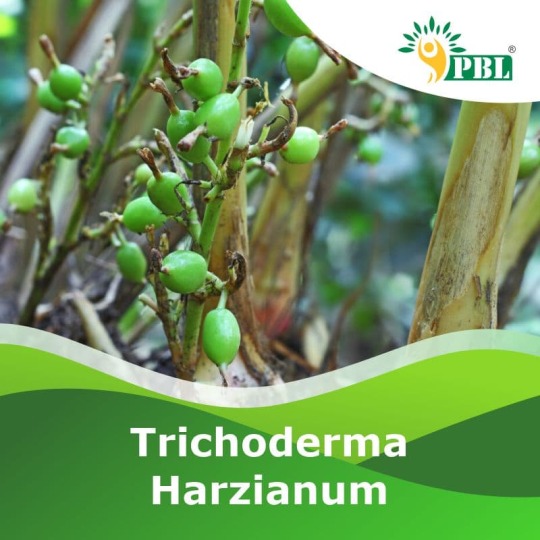
0 notes
Text
Bacillus Subtilis Manufacturers
Description: Bacillus Subtilis Manufacturers
A Potent bio fungicide and Plant Growth Promoting Rhizobacteria (PGPR) .
Safeguards plants by forming a protective shield on roots, hindering spore germination in plant pathogens, and outcompeting soil microbes.
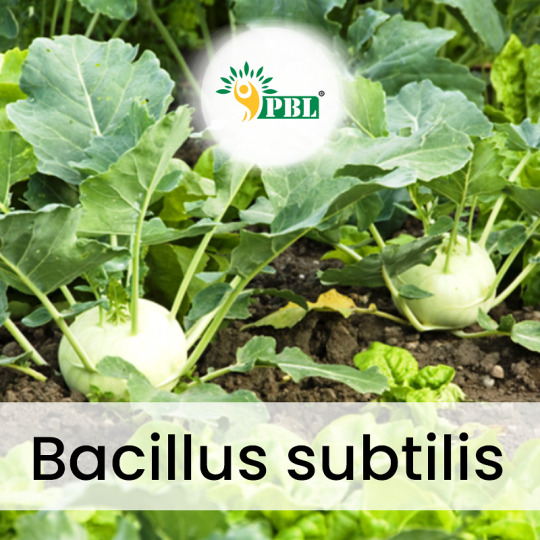
Disease Prevention:
Inhibits pathogen attachment, colonizes roots, and prevents soil-borne and foliar diseases.
Nutrient Enhancement:
Improves nitrogen fixation, solubilizes soil phosphorus, and produces siderophores for robust plant growth.
Secondary Metabolites:
Induces the production of plant secondary metabolites, regulates phytohormones, and enhances stress tolerance.
Competitive Effects:
Outcompetes pathogens through nutritional and spatial locus competition in the rhizosphere.
Antibacterial Materials:
Deploys subtilin, organic acids, and antibacterial proteins to inhibit pathogenic bacteria, enhancing disease resistance.

PEPTECH BIOSCIENCES LTD
+91-11-71239900
909, 9th Floor, Bigjos Tower, Netaji Subhash Place ,New Delhi -110034
0 notes
Link
Biofungicide Market Report - Global Industry Analysis, Size, Share, Growth Trends, Regional Outlook, Competitive Strategies and Segment Forecasts 2024 - 2030 In-Depth Analysis of the Biofungicide Market by Citius Research : Current Landscape and Future Growth Potential Biofungicide Market Overview The global Biofungicide Market sector represents a dynamic and evolving component of the broader industry landscape. As businesses across multiple verticals continue to adapt to changing market conditions, understanding the fundamental characteristics of this industry becomes increasingly critical. Our newly published market research report provides a thorough examination of the current state of the Biofungicide Market market, offering stakeholders valuable insights into both existing market conditions and future development trajectories. The analysis encompasses all major aspects of the industry, from supply chain dynamics to end-user demand patterns, providing decision-makers with the comprehensive perspective needed to navigate this complex sector successfully. Growth Drivers and Market Catalysts Several powerful forces are currently shaping the evolution of the Biofungicide Market industry. Technological innovation stands as one of the primary catalysts, with new advancements continuously redefining product capabilities and market expectations. Concurrently, shifting consumer preferences and behaviors are creating new demand patterns that industry participants must recognize and address. Regulatory developments at both national and international levels are further influencing market dynamics, creating both opportunities and challenges for businesses operating in this space. Additionally, macroeconomic factors and global trade patterns are contributing to the changing landscape of the Biofungicide Market sector, making a comprehensive understanding of these drivers essential for strategic planning. Market Segmentation and Structure The Biofungicide Market can be analyzed through multiple segmentation lenses, each revealing important insights about industry structure and opportunities. Product type variations represent one key dimension, with different categories often exhibiting distinct growth patterns and competitive dynamics. Application segmentation similarly provides valuable perspective, highlighting how various use cases are driving demand across different sectors. Geographic analysis remains equally crucial, as regional differences in adoption rates, regulatory environments, and consumer preferences frequently lead to substantially varied market conditions. Our report carefully examines each of these segmentation approaches, providing readers with a nuanced understanding of where and how opportunities are emerging within the broader Biofungicide Market landscape. Regional Market Dynamics A geographical examination of the Biofungicide Market reveals significant variations in market maturity, growth rates, and competitive environments across different parts of the world. Developed markets typically demonstrate certain characteristic patterns, often including higher penetration rates but more moderate growth trajectories. Emerging economies, by contrast, frequently show faster expansion potential though sometimes with greater volatility and different adoption challenges. Regional regulatory frameworks, cultural factors, and economic conditions all contribute to these diverse market landscapes. Our analysis provides detailed insights into these geographical variations, helping businesses tailor their strategies to specific regional circumstances and opportunities. Competitive Environment Analysis The competitive landscape of the Biofungicide Market features a diverse mix of established market leaders and innovative new entrants. Large multinational corporations often bring significant resources and distribution networks to the market, while smaller specialized firms frequently compete through technological innovation or niche market focus. The report examines the strategies employed by these various players, including their product development approaches, marketing initiatives, and geographic expansion plans. Particular attention is given to mergers and acquisitions activity, partnership formations, and other strategic moves that are reshaping the competitive dynamics of the Biofungicide Market. Key Industry Challenges and Barriers Despite the numerous opportunities present in the Biofungicide Market, industry participants face several significant challenges that require careful navigation. Supply chain complexities frequently emerge as a major concern, particularly in light of recent global disruptions. Regulatory compliance represents another substantial consideration, with requirements often varying significantly across different jurisdictions. Technological hurdles and the need for continuous innovation also pose challenges for many market participants, particularly those with limited R&D resources. Additionally, competitive intensity and price pressures continue to shape the operating environment for businesses across the Biofungicide Market value chain. Emerging Trends and Innovations The Biofungicide Market is currently experiencing several transformative trends that are likely to shape its future trajectory. Technological advancements are enabling new product capabilities and business models, while sustainability considerations are increasingly influencing both production methods and consumer preferences. Digital transformation is affecting various aspects of the industry, from supply chain management to customer engagement strategies. Furthermore, evolving distribution channels and go-to-market approaches are creating new opportunities for innovative market participants. Our report identifies and analyzes these key trends, providing readers with forward-looking insights that can inform strategic decision-making. Future Market Outlook and Projections Looking ahead, the Biofungicide Market appears poised for continued evolution and growth in the coming years. Multiple factors suggest that current market trends will persist and potentially accelerate, though the exact trajectory may vary across different segments and regions. Technological progress is expected to remain a primary driver of change, while demographic shifts and evolving consumer behaviors will likely create new demand patterns. The report provides carefully considered projections about how these various factors may interact to shape the future of the Biofungicide Market, offering valuable guidance for long-term strategic planning. Strategic Recommendations and Actionable Insights Based on our comprehensive analysis of the Biofungicide Market, the report presents a series of strategic recommendations tailored to different types of industry participants. Established market players will find guidance on maintaining competitiveness and defending market share, while new entrants can benefit from insights about effective market entry strategies. Investors gain valuable perspective on identifying promising opportunities within the sector, and suppliers learn how to align their offerings with evolving market demands. These recommendations take into account various possible market scenarios, helping businesses develop robust strategies that can succeed under different future conditions. Access the Complete Market Intelligence For businesses seeking to gain a competitive edge in the Biofungicide Market, our full market research report provides the depth of analysis and breadth of perspective needed to inform successful strategies. The complete study includes detailed market sizing data, growth forecasts segmented by product category and geography, competitive benchmarking analysis, and much more. Download the full Biofungicide Market Research Report here: https://citiusresearch.com/reports/Agriculture/biofungicide-market-report #MarketResearch #MarketSize #MarketShare #IndustryAnalysis #GrowthTrends #RegionalOutlook #CompetitiveStrategies #SegmentForecasts #BusinessIntelligence #StrategicPlanning #MarketTrends #CompetitiveAnalysis #Agriculture #AgriBusiness #AgricultureMarket #MarketResearchReport #CustomResearch #Consulting #CitiusResearch https://citiusresearch.com/reports/Agriculture/biofungicide-market-report Biofungicide Market, Biofungicide Market, Biofungicide Market Research Report, Biofungicide Market Industry Analysis, Biofungicide Market Trends, Biofungicide Market Size, Biofungicide Market Segments, Biofungicide Market Share, Biofungicide Market Growth, Biofungicide Market Regional Outlook, Biofungicide Market Competitive Strategies, Biofungicide Market Forecast, Market Research Report, Market Research, Citius Research
0 notes
Text
TRICHODERMA VIRIDE: A BENEFICIAL FUNGUS TRANSFORMING AGRICULTURE
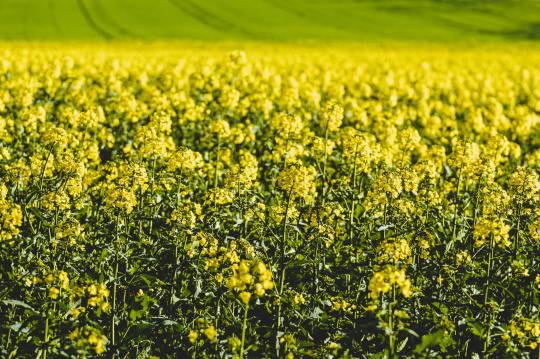
Step into the world of sustainable agriculture with our latest blog post, where we explore the incredible potential of Trichoderma viride. This remarkable fungus is at the forefront of revolutionizing modern farming practices, and in our blog, we take you on a journey through its key characteristics, the multitude of benefits it offers, and its diverse applications in crop production.
Discover how Trichoderma viride acts as a natural ally for farmers, bolstering soil health, warding off plant diseases, and promoting nutrient absorption. We delve deep into the science behind its extraordinary abilities and its role in reducing the reliance on chemical inputs, making agriculture more environmentally friendly and resilient.
Whether you're a seasoned agriculturist or simply curious about sustainable farming solutions, our blog will provide you with valuable insights into the power of Trichoderma viride. Read Full Blog Here: https://www.peptechbio.com/trichoderma-viride-a-beneficial-fungus-transforming-agriculture/
#Trichoderma viride#trichoderma viride biofungicide#trichoderma viride fungicide#trichoderma viride 1% wp#trichoderma viride manufacturer#trichoderma viride supplier#tricho pep-V
0 notes
Text
Trichoderma Fungicide: A Natural Shield for Your Crops
In the world of sustainable farming, Trichoderma has emerged as a powerful ally for plant protection and soil health. At Anand Agro Care, we offer a range of Trichoderma-based products that act as natural fungicides, biofertilizers, and plant growth enhancers.
What is Trichoderma Fungicide?
Trichoderma fungicide is a bio-based solution derived from beneficial fungi that protect plants against harmful pathogens. It works by colonizing the root zone and preventing the growth of disease-causing fungi like Fusarium, Rhizoctonia, Pythium, and Sclerotium. It is safe for the environment and ideal for organic farming.

Trichoderma Powder and Its Uses
Trichoderma powder is a dry formulation that is easy to apply during soil preparation or seed treatment. It improves soil microbial activity, suppresses soil-borne diseases, and promotes root development. Farmers often mix it with compost or apply it directly into the soil for maximum benefit.
Benefits of Trichoderma Liquid Formulation
For easy spray applications and better root absorption, Trichoderma liquid is the preferred option. This liquid biofungicide helps in faster colonization of the rhizosphere, ensures uniform distribution, and gives quicker results. It’s perfect for drip irrigation or foliar spray in horticulture and vegetable crops.
Trichoderma Fertilizer: Growth + Protection
Trichoderma fertilizer is more than just a fungicide—it also enhances plant growth. By increasing nutrient uptake and stimulating plant hormones, it results in higher yield and stronger immunity. It's a sustainable alternative to chemical fertilizers and pesticides.
Why Choose Anand Agro Care?
At Anand Agro Care, we provide high-quality Trichoderma-based products—in both powder and liquid forms—designed to meet the needs of modern agriculture. Our biofungicides are certified, eco-friendly, and suitable for organic as well as conventional farming.
Explore our full range of Trichoderma products now: 👉 Click here to visit the product page
0 notes